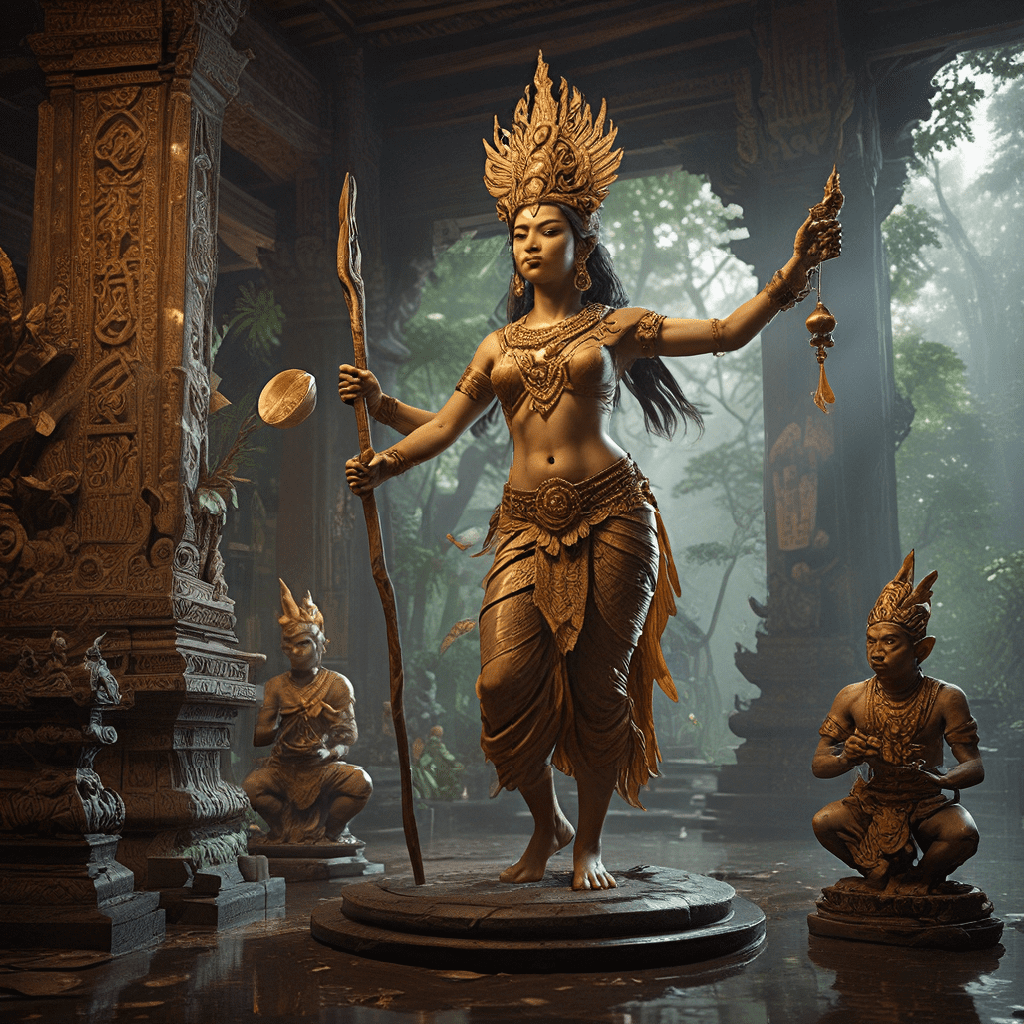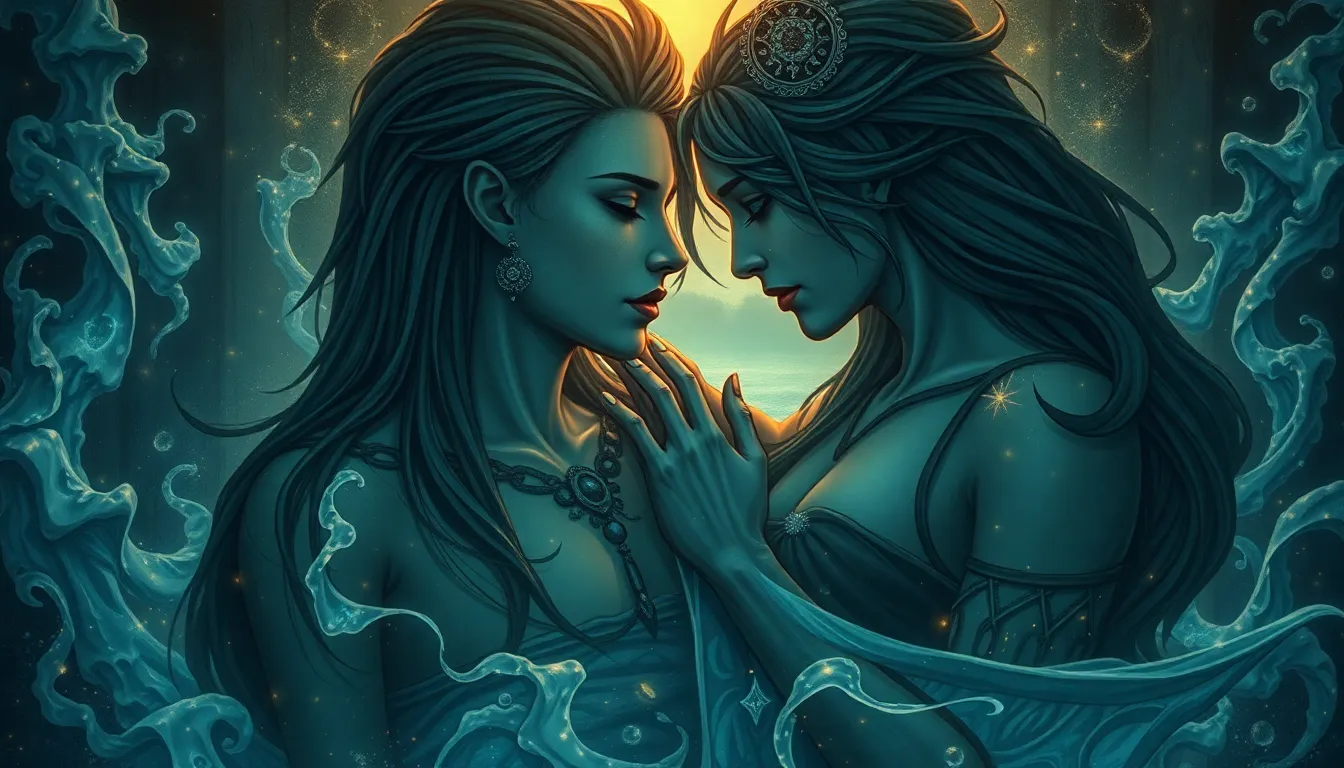Indonesian Mythology: Exploring the Concept of Balance and Harmony
Indonesia, a vast archipelago nation with thousands of islands, is also a melting pot of rich and captivating mythology. From the mystical tales of gods and spirits to the intricate stories of heroes and villains, Indonesian mythology offers a captivating glimpse into the vibrant cultural tapestry of the nation. At its core, Indonesian mythology is deeply rooted in the concept of balance and harmony, a principle that permeates every aspect of life, from the natural world to human relationships.
Unveiling the Mythological Tapestry of Indonesia
Indonesian mythology is a fascinating blend of ancient beliefs, Hindu influences, and indigenous traditions. With a history stretching back thousands of years, these stories are passed down through generations, woven into the fabric of daily life. They are present in everyday conversations, traditional rituals, and captivating art forms like the "Wayang Kulit" puppet shows. These myths offer profound insights into the values, beliefs, and aspirations of the Indonesian people.
The Cosmic Dance of Balance: The Foundation of Indonesian Mythology
The concept of balance, known as "Rukun" in Indonesian, is central to understanding the intricate web of Indonesian mythology. It is a principle that governs the relationship between humans, nature, and the spiritual realm. This concept is reflected in the belief that the universe is governed by a delicate balance between opposing forces, such as good and evil, light and darkness, and creation and destruction. Maintaining this balance is crucial for ensuring harmony and prosperity.
The Trimurti: The Divine Trinity of Creation, Preservation, and Destruction
The "Trimurti" is a core concept borrowed from Hinduism and integrated into Indonesian mythology. This divine trinity represents the three essential forces that govern the universe: Brahma, the creator; Vishnu, the preserver; and Shiva, the destroyer. These deities are not seen as separate entities but as different aspects of a single, supreme being. They represent the cyclical nature of life and the constant interplay between creation, preservation, and destruction.
The Concept of Rukun: Harmony in Human Relationships
Beyond the cosmic realm, the principle of "Rukun" also governs human relationships. It emphasizes the importance of social harmony, cooperation, and mutual respect. In Indonesian mythology, the concept of "Rukun" is often personified by figures like "Batara Guru," the king of the gods, who embodies wisdom, justice, and the ability to maintain order in the divine realm.
The Role of Ancestor Spirits: Guardians of Balance and Tradition
In Indonesian mythology, the spirits of ancestors hold a significant place in maintaining balance and order. They are revered as guardians of family lineages, protectors of tradition, and intermediaries between the living and the spiritual realm. These spirits are believed to watch over their descendants, providing guidance, protection, and blessings. Their presence is felt in everyday life, influencing decisions, shaping rituals, and offering support during times of need. Maintaining harmony with these ancestral spirits is crucial for ensuring peace, prosperity, and the continuation of cultural traditions. Disrespecting them, or neglecting their rituals, is believed to disrupt the delicate balance and invite misfortune.
The “Dewa” and the “Buta”: Forces of Order and Chaos
The Indonesian mythological landscape is populated by a diverse cast of characters, with the "Dewa" (gods) and the "Buta" (demons) representing the forces of order and chaos. The "Dewa" are embodiments of virtues like wisdom, justice, courage, and compassion. They represent the forces that maintain harmony and protect humanity. In contrast, the "Buta" are often associated with negative qualities like greed, jealousy, and violence. They represent chaos and disruption, often causing misfortune and challenging the established order. This constant interplay between the "Dewa" and the "Buta" shapes the narrative of Indonesian mythology, reminding people of the importance of maintaining balance and righteousness to overcome evil and preserve harmony.
The Myth of “Sunda Kelapa”: Navigating the Balance between Progress and Tradition
The "Sunda Kelapa" myth, a popular story in Indonesian folklore, explores the complex relationship between progress and tradition. The myth tells the tale of the founding of the city of Jakarta (formerly called "Sunda Kelapa"), which is said to have been established by the legendary prince, "Jayakarta." The story details how the prince, a symbol of ambition and progress, had to navigate the delicate balance between his desire for expansion and the need to respect the existing social and cultural structures. The myth serves as a cautionary tale, highlighting the importance of finding a middle ground between ambition and tradition for the sake of societal harmony. As Indonesia continues to develop, the "Sunda Kelapa" myth remains relevant, offering a reminder of the importance of preserving cultural heritage while embracing progress.
The Concept of “Karma” and “Reinkarnasi”: The Cycle of Balance and Renewal
The concepts of "Karma" and "Reinkarnasi" (reincarnation) are central to the Indonesian understanding of balance and the cyclical nature of life. "Karma" refers to the belief that actions have consequences, both in this life and in the next. "Reinkarnasi" involves the idea that souls are reborn into different lives, with the quality of their past lives influencing their future incarnations. This concept emphasizes the importance of living a virtuous life to achieve a better rebirth and contributes to the Indonesian emphasis on balance and harmony. It highlights the interconnectedness of everyone and the need to strive for righteousness to contribute to a harmonious future.
The “Wayang Kulit” Puppets: Embodiment of Balance and Storytelling Traditions
The "Wayang Kulit" shadow puppet show is more than just entertainment; it is a vibrant and powerful art form that embodies the essence of Indonesian mythology and its emphasis on balance. The stories told through the "Wayang Kulit" explore complex themes of good versus evil, justice versus injustice, and the constant struggle between order and chaos. The intricate puppets represent various characters from mythology, including gods, heroes, demons, and even animals, all playing their part in the grand narrative of balance and harmony. The "Wayang Kulit" serves as a powerful tool for transmitting knowledge, values, and cultural traditions across generations.
Conclusion: Indonesian Mythology – A Timeless Lesson in Balance and Harmony
Indonesian mythology is a rich tapestry of stories that offer profound insights into the values and beliefs of the Indonesian people. At its core is the concept of balance and harmony, a principle that governs every aspect of life, from the relationship between humans and nature to the interplay of opposing forces. The stories of gods, spirits, heroes, and villains, the intricate rituals and traditions, and the captivating art forms like the "Wayang Kulit" all serve to reinforce this fundamental principle. Exploring Indonesian mythology is to embark on a journey through a world where balance is not just a concept but a way of life, a powerful reminder of the interconnectedness of all things, and the importance of striving for harmony in all aspects of existence.
FAQ
Q: What are some common characters in Indonesian mythology?
A: Some common characters include:
- Batara Guru: The King of the Gods, representing wisdom and justice.
- Dewi Sri: The Goddess of Rice and Fertility.
- Roro Jonggrang: A beautiful princess in the story of "Candi Prambanan."
- Garuda: A powerful bird-like creature, often depicted as a vehicle for Vishnu.
- Hanoman: A monkey god known for his strength and loyalty.
Q: What is the significance of the "Wayang Kulit" in Indonesian culture?
A: The "Wayang Kulit" is more than just entertainment. It is a powerful tool for transmitting knowledge, values, and cultural traditions across generations. The stories are often used to teach morals, history, and religious beliefs.
Q: How does Indonesian mythology connect to the natural world?
A: Indonesian mythology is deeply rooted in the natural world. Many mythical figures and creatures are associated with elements like mountains, oceans, forests, and animals. The belief in the interconnectedness of all things emphasizes the importance of respecting nature and living in harmony with the environment.
Q: What is the role of the "Dewa" and the "Buta" in Indonesian mythology?
A: The "Dewa" represent the forces of order and goodness, while the "Buta" represent chaos and evil. This constant interplay between the two forces highlights the importance of maintaining balance and righteousness to overcome evil and preserve harmony.


